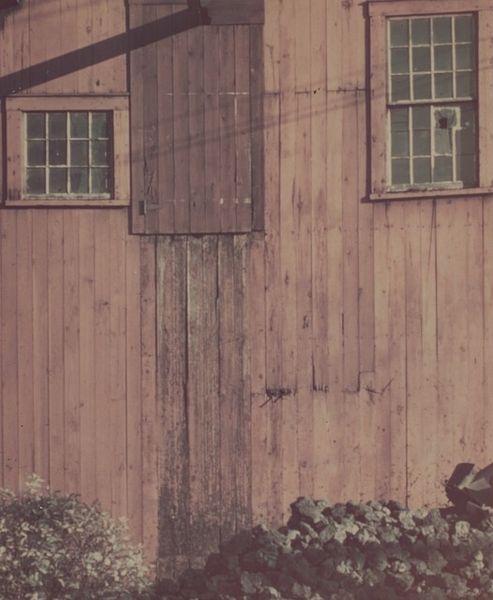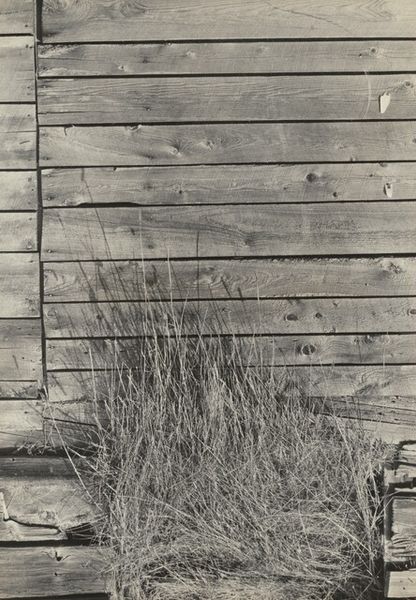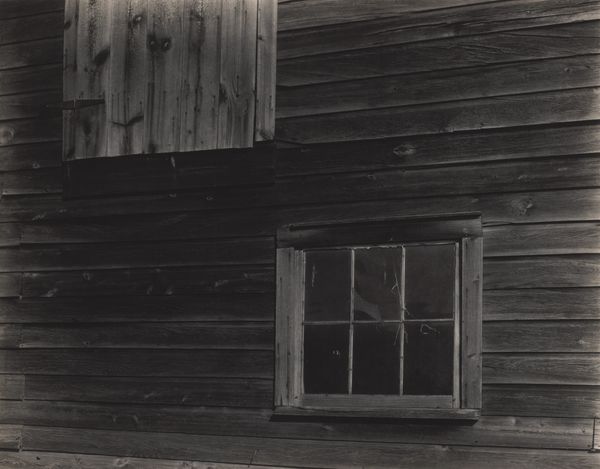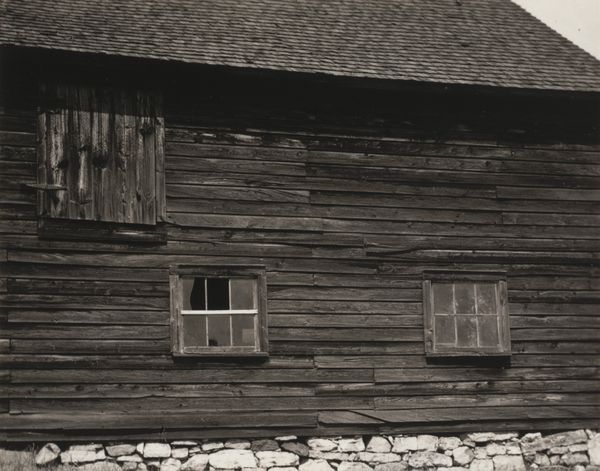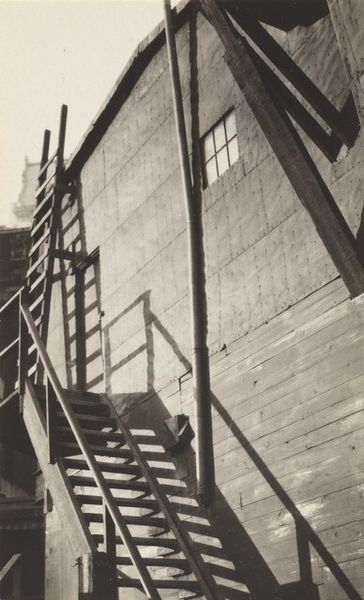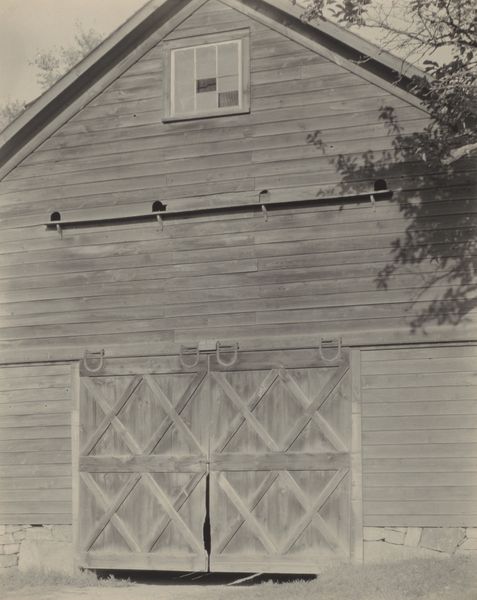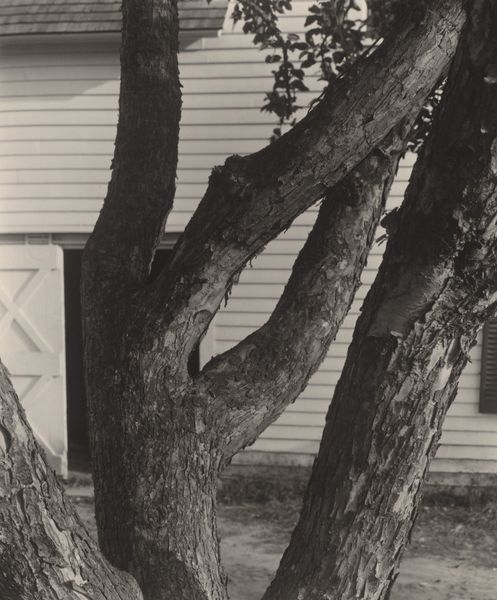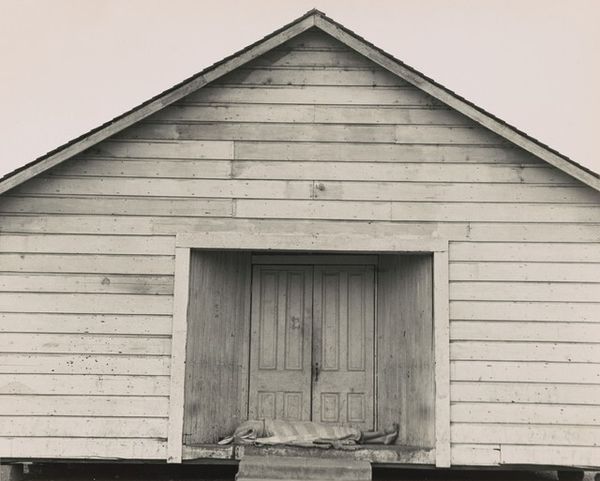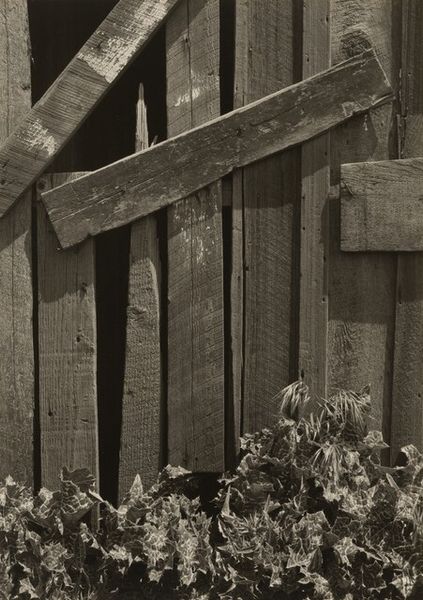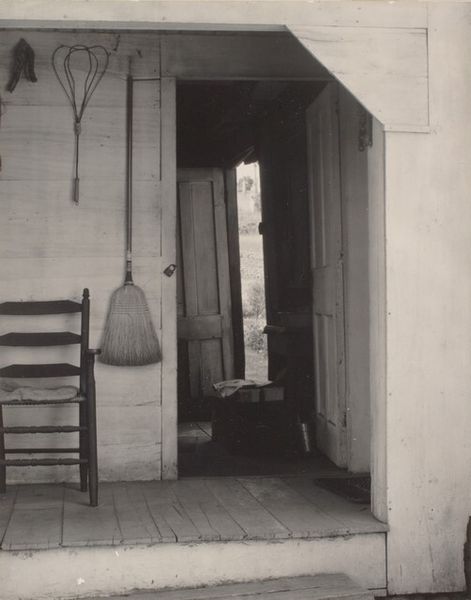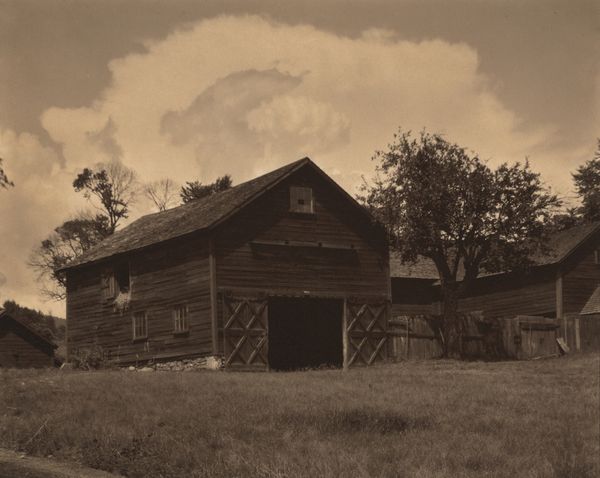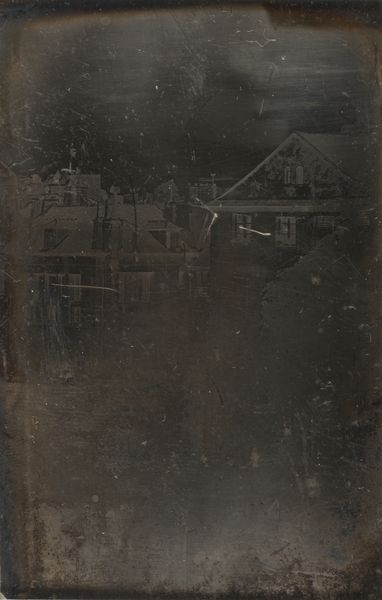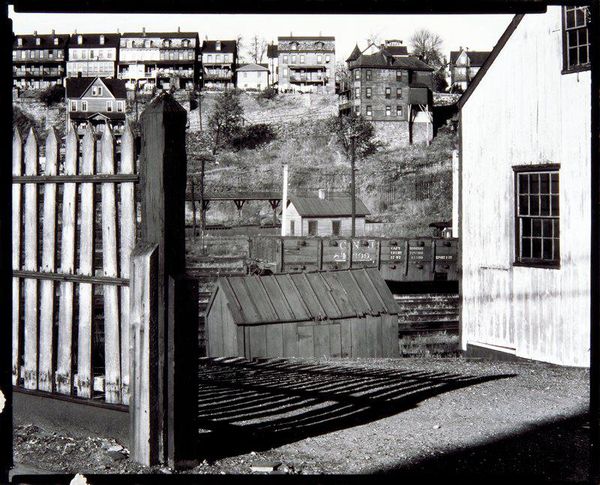
photography, architecture
#
precisionism
#
landscape
#
historic architecture
#
photography
#
geometric
#
modernism
#
architecture
#
realism
#
historical building
Dimensions: overall: 19.5 x 24.3 cm (7 11/16 x 9 9/16 in.)
Copyright: National Gallery of Art: CC0 1.0
Curator: This photograph, "Side of White Barn," was created in 1917 by Charles Sheeler, a pivotal figure in American modernism. What strikes you initially about this piece? Editor: The composition is intensely geometrical. It feels both minimalist and monumental; the barn fills the frame, a study in rectangles and subtle textures within the limited tonal range. Curator: Absolutely. Sheeler's shift towards Precisionism occurred around this time, as America modernized amidst the First World War. His emphasis on clarity, structure, and vernacular architecture signaled a deliberate move away from romantic portrayals of rural life and towards a celebration of industrial forms, as you may notice, the buildings in rural america start to gain new value and identity through this lens. Editor: Indeed, this isn't a sentimental view of rural life. The barn, though humble, is presented as an object of austere beauty. Note the sharp delineation of light and shadow; it flattens the space and emphasizes the formal arrangement of shapes and lines. Curator: The work aligns with the broader cultural move seeking an "American" aesthetic, distinct from European influences. Consider the Stieglitz circle’s attempts to capture authentic subjects—urban and industrial scenes. Sheeler’s images suggest that American art can be rooted in the real, everyday experience of its people. Editor: He's stripped the barn of any extraneous detail, presenting only its essential architectural elements. This distillation grants the photograph an abstract quality, a quiet dignity inherent to the simple form of the structure itself. Curator: In viewing it today, we can recognize a particular vision of early 20th-century American identity and how an artist’s approach may both document and shape historical memory. Editor: I agree, a powerful image composed of pure forms, perfectly reflecting a sense of its era!
Comments
No comments
Be the first to comment and join the conversation on the ultimate creative platform.
